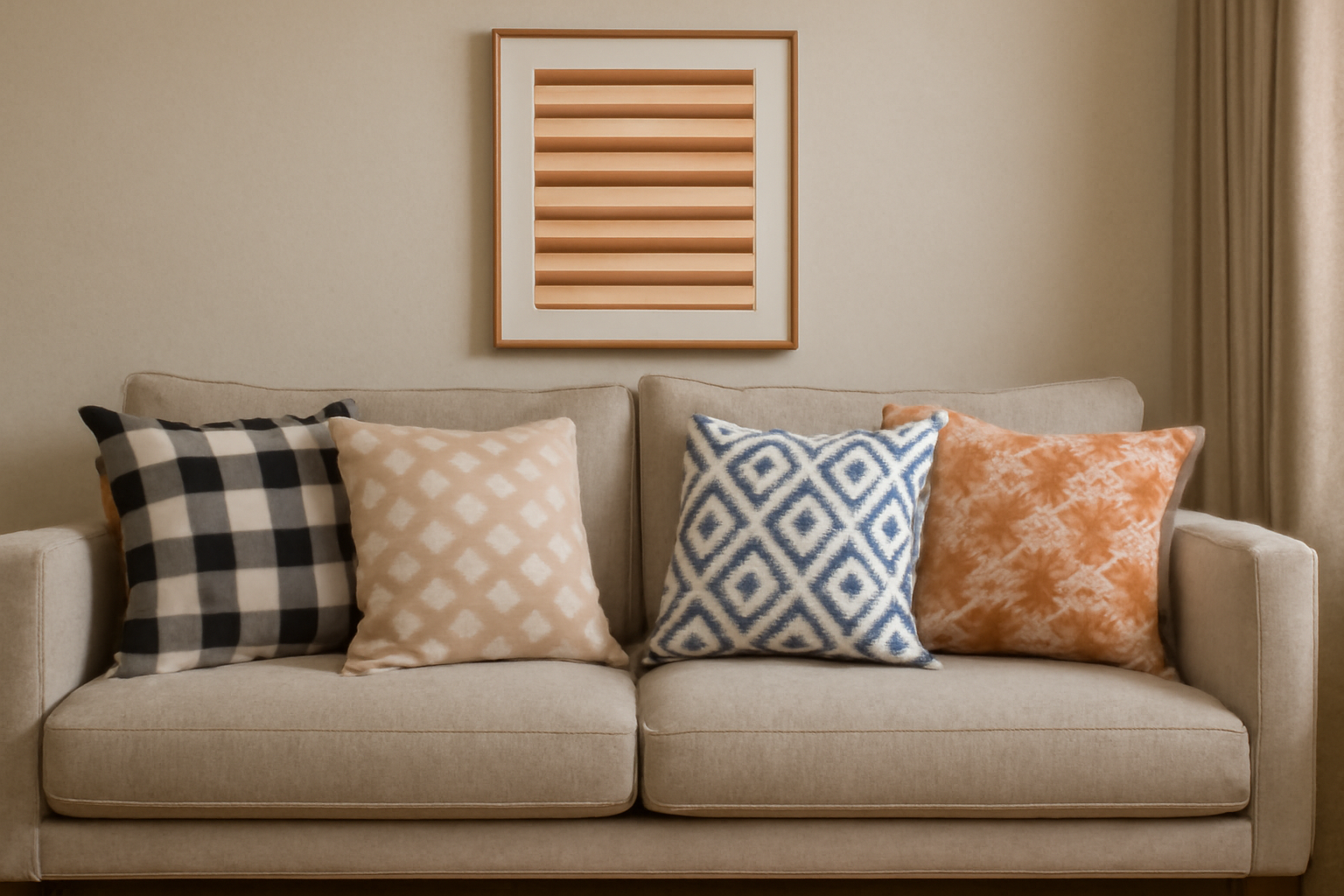Mixing patterns in home decor can feel intimidating, but when done right, it brings energy, personality, and style to your space. Interior designers use patterns to create dynamic rooms that feel curated and full of life. The secret? A little structure, a bit of confidence, and a few key design principles.
Here’s how to mix patterns like a pro—without making your home feel chaotic or overwhelming.
Start with a Base Pattern
The first step is to choose a foundation pattern that will guide your other choices. This pattern will often be the boldest or most dominant in size and color.
Common base pattern options:
- A floral or geometric area rug
- A patterned sofa or set of curtains
- Bold wallpaper
- Large-scale printed bedding
Once you have your anchor, you can build around it with complementary patterns that support (not compete with) the main design.
Vary the Scale of Patterns
This is one of the most important rules in pattern mixing: always vary the scale.
Here’s how to do it:
- Combine one large-scale pattern (e.g., oversized florals or wide stripes)
- With one medium-scale (e.g., polka dots or abstract designs)
- And one small-scale (e.g., tight plaid or subtle textures)
Varying scale keeps the eye moving without feeling cluttered. If all patterns are the same size, they’ll visually clash.
Stick to a Unified Color Palette
A consistent color palette helps tie everything together. Choose a few key colors that appear across your patterns.
Tips:
- Use a dominant color found in all or most of your patterns.
- Limit your palette to 2–4 main colors to keep things cohesive.
- Neutral tones can help balance louder colors.
For example, you might mix navy stripes, blue floral pillows, and a rug with hints of blue and cream—it all connects through color.
Combine Different Pattern Types
Mixing different types of patterns keeps things interesting. Try combining:
- Stripes with florals
- Plaids with polka dots
- Geometric with organic or tribal prints
- Animal prints with abstract designs
The contrast between structure (like stripes or checks) and softness (like florals or ikat) adds depth and drama.
Use Solids and Neutrals to Give the Eye a Break
Don’t overdo it—your eye needs a place to rest.
Balance patterns with:
- Solid colors on walls, large furniture pieces, or curtains
- Textured neutrals like linen, jute, or velvet in cream, beige, or gray
- Natural elements like wood or metal to ground the space
Solids act like breathing space between pattern-heavy areas.
Use Repetition to Create Rhythm
To keep your design from feeling random, repeat patterns or motifs in more than one place.
Examples:
- Use the same stripe from a rug in a pillow or chair detail.
- Echo a botanical print from curtains in a smaller framed artwork.
- Carry a polka dot pattern from a throw pillow to an accent bowl or tray.
This repetition makes the space feel intentional and harmonious.
Layer Patterns Gradually
If you’re unsure, start small. Introduce patterns gradually and build confidence as you go.
Start with:
- A patterned throw pillow on a neutral sofa
- A rug with subtle patterning under solid furniture
- One bold wallpapered wall paired with neutral decor
As you get more comfortable, add additional layers of pattern to curtains, bedding, art, or upholstery.
Think About the Room’s Purpose
Different rooms tolerate different levels of boldness.
- Living rooms can handle bold combinations—rugs, pillows, curtains, and art.
- Bedrooms benefit from softer or more serene pattern mixes.
- Bathrooms are great for one strong statement (like a printed wallpaper or tile).
- Kitchens may rely more on pattern in backsplashes, textiles, or dinnerware.
Match the intensity of your pattern mix with the vibe you want the room to have.
Let One Pattern Be the Star
When mixing multiple patterns, give one the spotlight. Let it shine by making the other patterns more subdued.
For example:
- A bold floral couch pairs well with neutral, low-contrast plaid pillows.
- A striking patterned rug grounds a room with mostly solid furniture.
- Graphic wallpaper should be balanced with simple fabrics and textures.
Avoid having multiple “loud” elements competing for attention.
Don’t Be Afraid to Break the Rules (If It Feels Right)
Once you understand the basics of mixing patterns, feel free to bend the rules to suit your style. Sometimes, unexpected combinations are what make a room stand out.
Trust your instincts:
- If it feels balanced, it probably is.
- If something feels “off,” try adjusting scale or color balance.
- Always step back and view the entire room before deciding.
Sometimes, personal taste overrides any design formula—and that’s part of the fun.
Pattern Mixing Done Right Is Bold and Beautiful
Pattern mixing isn’t just a trend—it’s a timeless way to create a layered, interesting space that reflects your personality. With a thoughtful approach to scale, color, and variety, your room can feel balanced, expressive, and full of life.
Take your time, experiment, and enjoy the process. After all, home decor should be fun!
